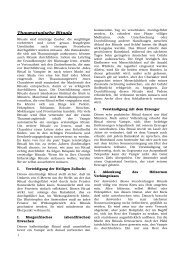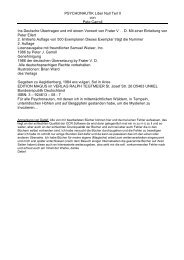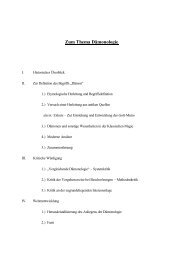CHAPTER 2 CHAPTER 3 CHAPTER 1 CHAPTER 2 CHAPTER 3 ...
CHAPTER 2 CHAPTER 3 CHAPTER 1 CHAPTER 2 CHAPTER 3 ...
CHAPTER 2 CHAPTER 3 CHAPTER 1 CHAPTER 2 CHAPTER 3 ...
You also want an ePaper? Increase the reach of your titles
YUMPU automatically turns print PDFs into web optimized ePapers that Google loves.
<strong>CHAPTER</strong> 3 60<br />
Isaiah continued his ministry until about 690 B.C. His name means: "helper". And he did everything he could<br />
to help and warn the people of the impending catastrophes. After the death of King Ahaz, Hezekiah was King<br />
of Judah and during his fourteenth year another catastrophe was expected.<br />
Isaiah 28:2: "Behold, the Lord hath a mighty and strong one, which as a tempest of hail and a destroying<br />
storm, as a flood of mighty waters overflowing, shall cast down to the earth with the hand."<br />
A "mighty and strong" heavenly body was to be cast down to Earth.<br />
Isaiah 29:5-6: "Moreover the multitude of thy strangers shall be like small dust, and the multitude of the<br />
terrible ones shall be as chaff that passeth away: yea, it shall be at an instant suddenly. Thou shalt be visited of<br />
the Lord of hosts with thunder, and with earthquake, and great noise, with storm and tempest, and the flame of<br />
devouring fire."<br />
Isaiah 28:21: "For the Lord . . . shall be wroth as in the valley of Gibeon, that he may do his work, his strange<br />
work; and bring to pass his act, his strange act."<br />
This refers to the "strange act" in the valley of Gibeon when Joshua witnessed a meteoric shower and<br />
commanded the sun to stand still. Isaiah knew of this happening and says the new catastrophe will be similar<br />
to it.<br />
The prophet referred his readers to the "Book of the Lord". Isaiah 34:16: "Seek ye out the book of the Lord,<br />
and read: no one of these shall fail." Evidently this book belonged to the same series as the Book of Jasher, in<br />
which the records of the days of Joshua at Gibeon were preserved. Other ancient records must have been in<br />
the "Book of the Lord". The Book of Jasher is once more avail-able, but the other book is still lost.<br />
There were more catastrophes in the years ahead, but there is not sufficient room here to list all of them.<br />
Planets of our Solar System were greatly disturbed by the destruction of Lucifer-Maldek, and its moon<br />
Lilith-Malona. The Chinese say: "In the tenth year of the Emperor Kwei, the eighteenth monarch since Yahou,<br />
the five planets went out of their courses. In the night stars fell like rain. The earth shook."<br />
Mars and the Earth suffered more from Lucifer than any of the other worlds. The two moons of Mars have<br />
already been mentioned, however, other facts must be added. How could Jonathan Swift have guessed not<br />
only their number (two), but their size and their short revolutions? Homer knew about the "two steeds of<br />
Mars" and Virgil wrote about them. Asaph Hall gave the names of Phobos (Fear) and Deimos (Panic) to these<br />
two moons. These names were suggested by Mr. Madan of Eton, England because the ancients said Mars had<br />
two steeds and gave them these names. It should also be mentioned that Voltaire told of these moons in the<br />
story of Micromegas more than a hundred years before their discovery!<br />
Phobos, the inner satellite, revolves at the distance of 5800 miles from the center of Mars, and 3700 miles<br />
from the surface; it completes a sidereal revolution in only 7h 39m, a period less than one third that of the<br />
planet's rotation. As viewed from the planet, therefore, it rises in the west and sets in the east. No other known<br />
satellite in the solar system revolves in a shorter interval than the rotation period of its primary.<br />
The distance of Deimos from the center of Mars is 14,600 miles, and its period of revolution is 30h-18m. It is<br />
smaller than the inner satellite (5 miles?), and only one third as bright. The size (diameter) of these satellites is<br />
not exactly known. Phobos is about ten miles in diameter and Deimos is about five miles in diameter.<br />
In mythology, the two steeds were yoked when the Greek god of war, Ares (Mars) prepared to descend to the<br />
earth on a punitive expedition. This sounds like the two artificial satellites (steeds) of Mars were used together<br />
for launching plateforms before Mars sent spaceships to the undisciplined Earth in ancient times. To "yoke"






